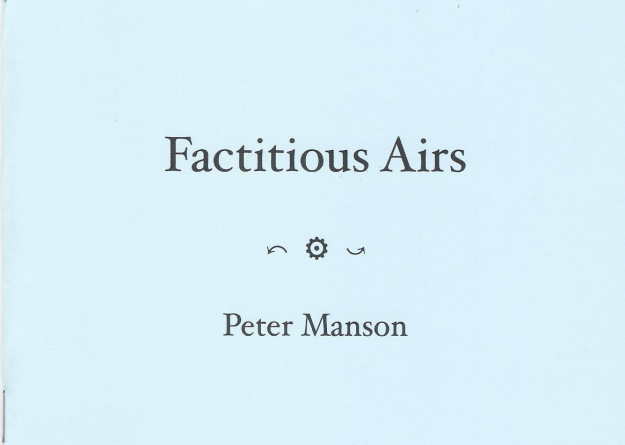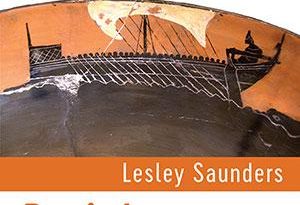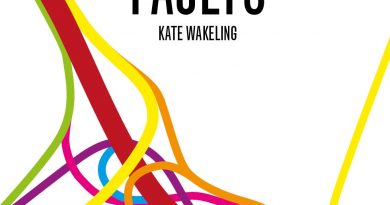Factitious Airs by Peter Manson
– Reviewed by Alice Tarbuck –
Peter Manson’s Factitious Airs is one of two pamphlets from the new Zarf Editions imprint. Manson is an experimental poet with publications from Miami University Press, Blart Books and many others. This latest pamphlet is beautiful, humorous and touching.
Manson’s style is dense, often non-syntactical or grammatical, and his use of run-on lines and sparse punctuation often have the effect of moving a reader down a fast-flowing stream, away from any recognisable shore. To hear him read is to feel this even more keenly: his is a poetry that offers to carry the reader away, to bring them back occasionally with a recognisable slang phrase, or emergence of the first person.
All of this is of course expected in paratactical, Cambridge-school-esque experimental poetry. However, three noticeable things differentiate Manson from his peers. Firstly, his attention to place, particularly to Scottish speech rhythms and cultural ideas. Secondly, his deep trust of the reader. Often in experimental poetry there is an obliteration of the poem as a communicative, or meaning-bearing medium: quite rightly so, in many cases. Manson, refreshingly, puts stress on the ability of poetry to carry sense, but not on its ability to convey impression, emotion or sonic patterning, which amounts to its own sort of secondary syntax. Thirdly, and finally, Manson places high value on the aesthetics of poetry. His is amongst the most beautiful work I have read this year: its sounds are delicious, inviting, written to be dwelt upon.
The collection opens with an oulippo epithalamium, written using only the letters of the couples’ name. It is, above all, a poem of enormous fun: ‘a husband, soon, and a bride on board’ are travelling to the wedding when ‘some neds on speed dive in’. This playful inventiveness within limited language possibilities recurs throughout the collection. ‘raven A’ is a meditation on the ways in which the self might be quantified and understood within the limits of speech. At the poem’s opening, speech is relinquished: ‘speech placed completely and verifiably beyond use’. What takes its place is interior: ‘a window in permanent slamming in blindness / still only a window / unhinged’, knocks over the idea of windows as openings of opportunity. The romantic gaze is overturned in the next stanza, its magic diluted by the number of eyes which transmit it: ‘love is not blind / I mean seriously/ but a generalisation of eyes about the set’.
The poetic voice is continually interjecting, an unreliable narrator insisting on certain assertions that dissolve under pressure. Too many eyes communicating love: there is a resigned loneliness here, an exclusion that colours all of the collection’s poems. The poem moves into parable: ‘the cock and the hen and the fox are// in tawny unison flattening hair to a scale’. Just as they assemble, their purpose is subverted. Not here to illustrate a tale, but to perform a perverse homonym of that purpose, to make things neat, to ensure things are ‘to a scale’. The narrative ends abruptly, and the poem states that ‘you know where the writing ends / and the thing typing enters the mid-part’: the poet continually gets in the way of the poem. Everything is half-done, then given up when the authorial voice enters.
Amongst the wittiest and loveliest works in the collection is ‘72 Semperivium cultivars named by Nicholas Moore’. It is a found poem, alphabetically listing cultivar names given by classics scholar, poet and eccentric Nicholas Moore. It looks rather like a wall of mixed associations from gameshow ‘Only Connect’: from towns in Scotland to Greek tradegies and plays by Moliere, the names of the plants, which of course we cannot see, form humorous and evocative juxtapositions.
More serious meditations appear in poems such as ‘Time comes for you’, where ‘If there is an afterlife, it is lived / in the face of discontinuous instances of creaming / in many voices, all of them loved’. The only consolation in this work is offered in its patterning: gorgeous runs of sibilance and assonance, beautiful verbal evolutions that carry the weight of a line but make its bleak sentiment, not beautiful, but consolatory even as it is spoken. Manson’s interjections – ‘-yeah, right’ etc. – puncture any closed loops of sincerity. Large ideas must always be pushed up against life, with its switches and turns. In ‘Amen Dunes’, the poem seeks ‘An echo the length of iconic memory’, a fading trace of self, rather than the ‘wide and trailed’ loop of living: messy, spreading. Loneliness is here, in ‘optimism is made for my, by machines’, but these machines can be altered, tampered with: ‘cut, untwist, splice and wipe’ until there is a loop that appeals.
It is laziness to claim that experimental poetry is difficult to write about, but there is perhaps a problem of language: how to convey, in coherent sentences, the broadness and beauty of breaking out of this coherence in particular ways. Manson’s poetry is inviting, challenging, transfixing. This is a wonderful pamphlet that rewards close and continual engagement, and reading aloud.




